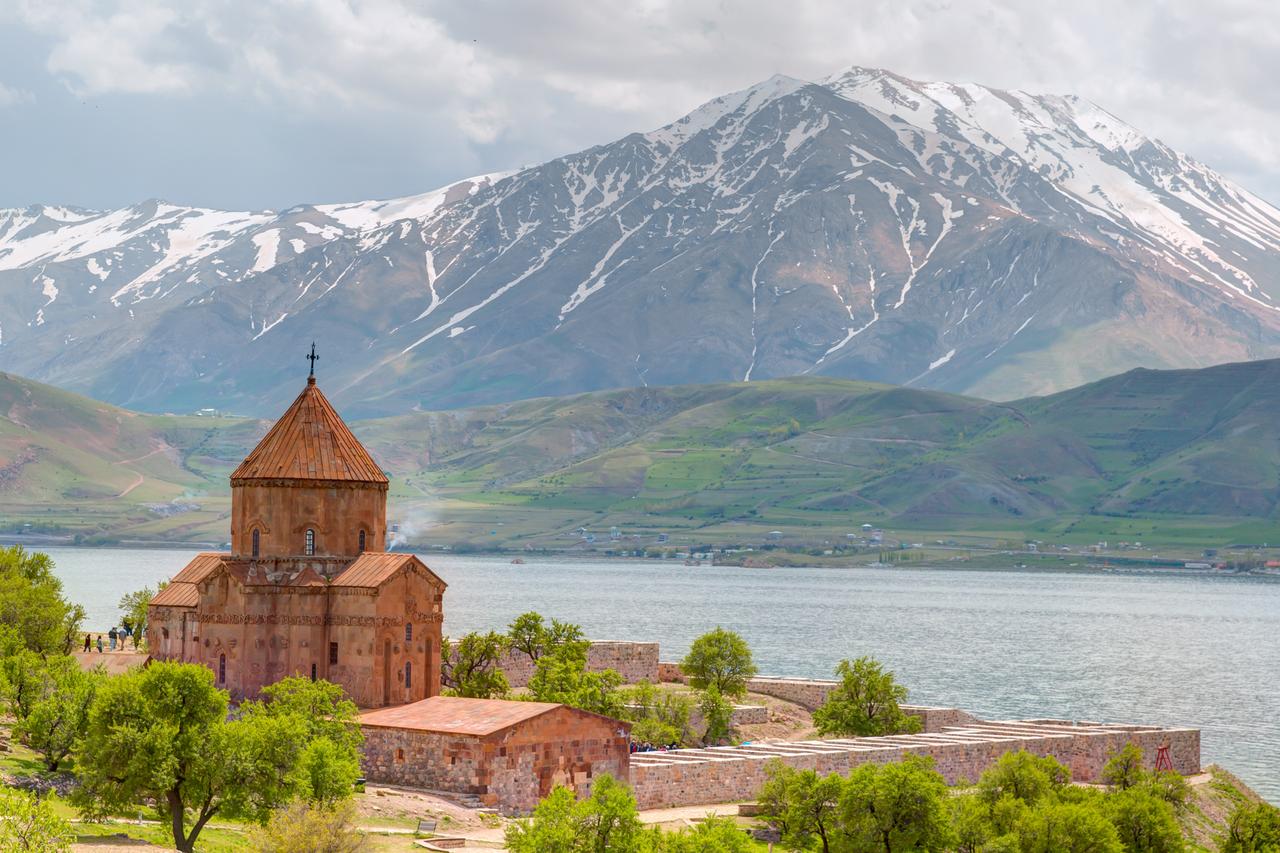
Lake Van stands out as one of Türkiye’s most distinctive destinations—not just for its size, but for the depth of culture, history, and natural beauty surrounding it.
This massive body of water, formed by volcanic activity nearly 200,000 years ago, covers 3,755 square kilometers (1,450 square miles) and reaches depths of up to 450 meters.
Locals call it the "Van Sea" because of its vastness, and travelers who venture east to this part of the country discover a landscape shaped by millennia of human and geological history.
From island churches to fairy chimneys, this guide will help you plan your journey around Lake Van and offer ideas for other scenic lakes worth visiting across Türkiye.
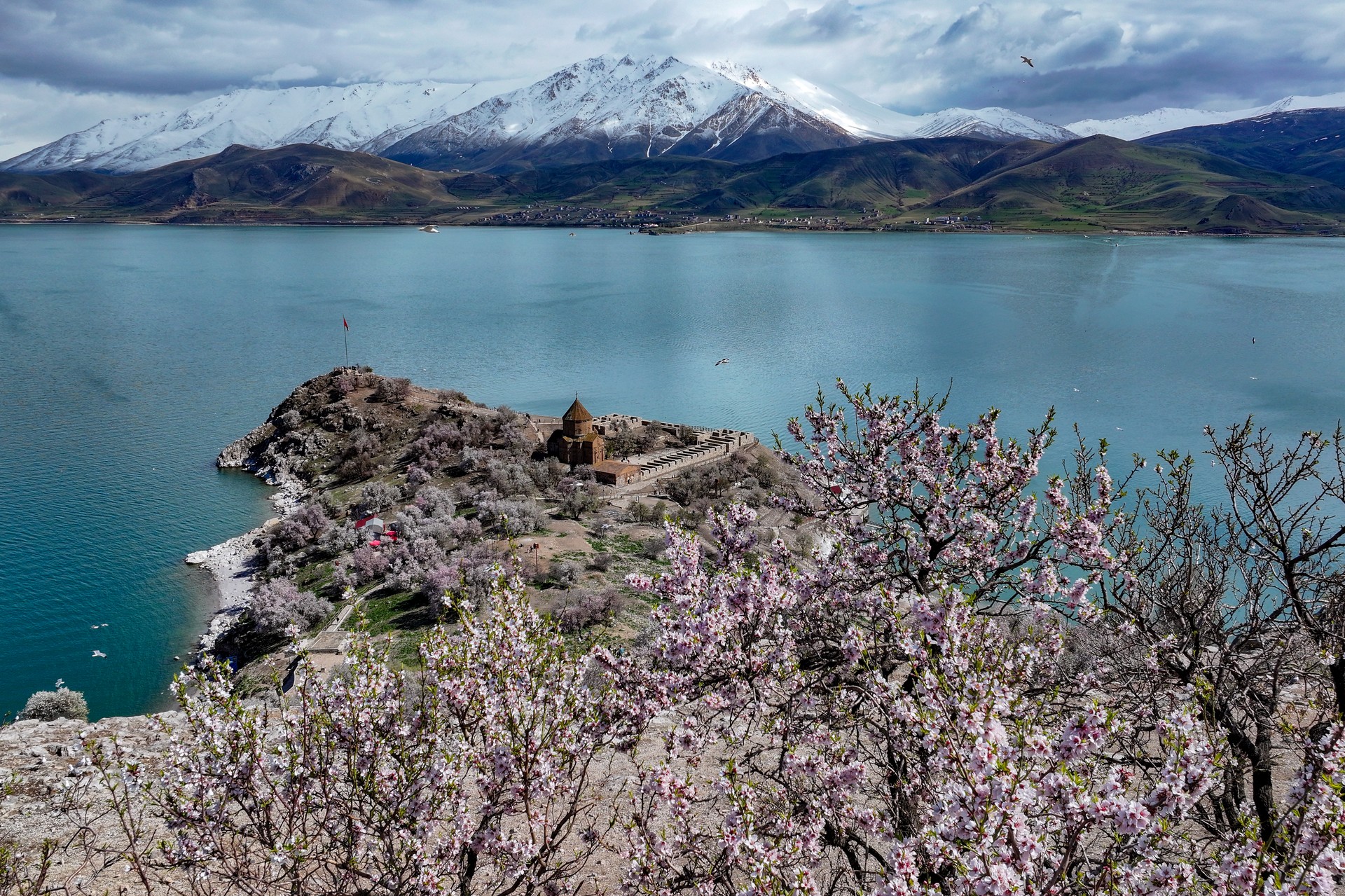
Located just off the southern coast of Lake Van near Gevas, Akdamar Island offers visitors a rare chance to see one of the region’s best-preserved medieval churches.
The Cathedral of the Holy Cross, built between 915 and 921 C.E. by King Gagik Artzruni, features reddish andesite stone and exterior relief carvings that depict biblical and symbolic scenes. These details, crafted over a millennium ago, remain visible today.
To reach the island, you can take a ferry from the Akdamar Pier in Gevas. Shared ferries cost $5 per person and leave once full, but travelers often opt for a private boat ride during off-peak hours.
Tourists pay a $14 entrance fee to visit the island, where they typically spend an hour walking the perimeter trail, taking in sweeping views of Lake Van and, on clear days, Mount Ararat.
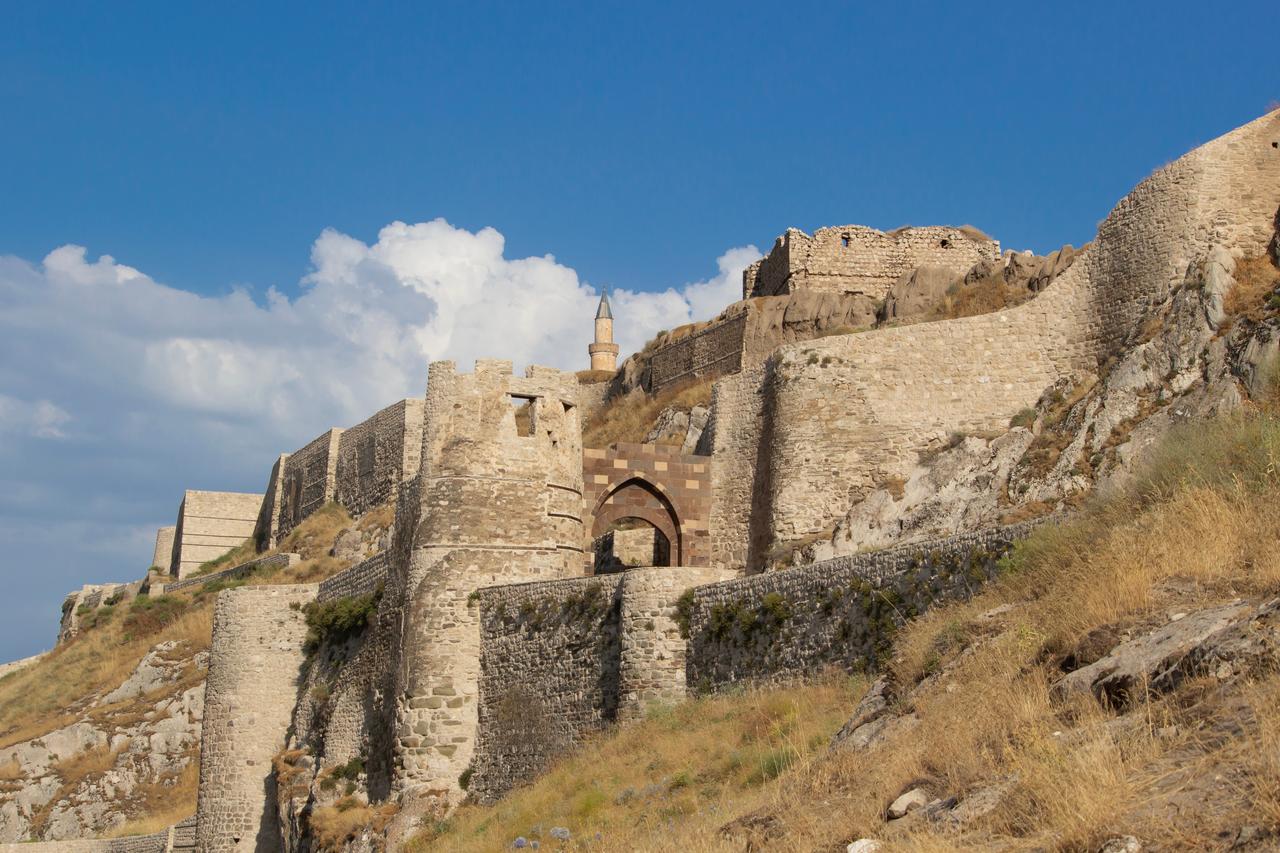
Van Castle, built by the Urartian King Sarduri I in the ninth century B.C.E., sits high above the modern city on a rocky ridge.
From the top, you can look out across Lake Van and the entire basin below. The climb is steep, but the stone paths and open-air remains of temples, tombs, and the Suleyman Han Mosque (built during the 16th century) make the effort worthwhile.
The castle also connects to Tushpa, the ancient Urartian capital, whose remnants still surround the site. To get there, hop on a dolmus (shared minibus) marked "Kale" from Van’s city center. Entrance to the site is $3.5.
Just northeast of the castle, the Van Museum offers essential background on the civilizations that shaped the region, from Urartu to the Ottomans. It features artifacts such as 3,000-year-old ceramics, tools, and inscriptions. The museum opens daily except Monday and charges $3.5.
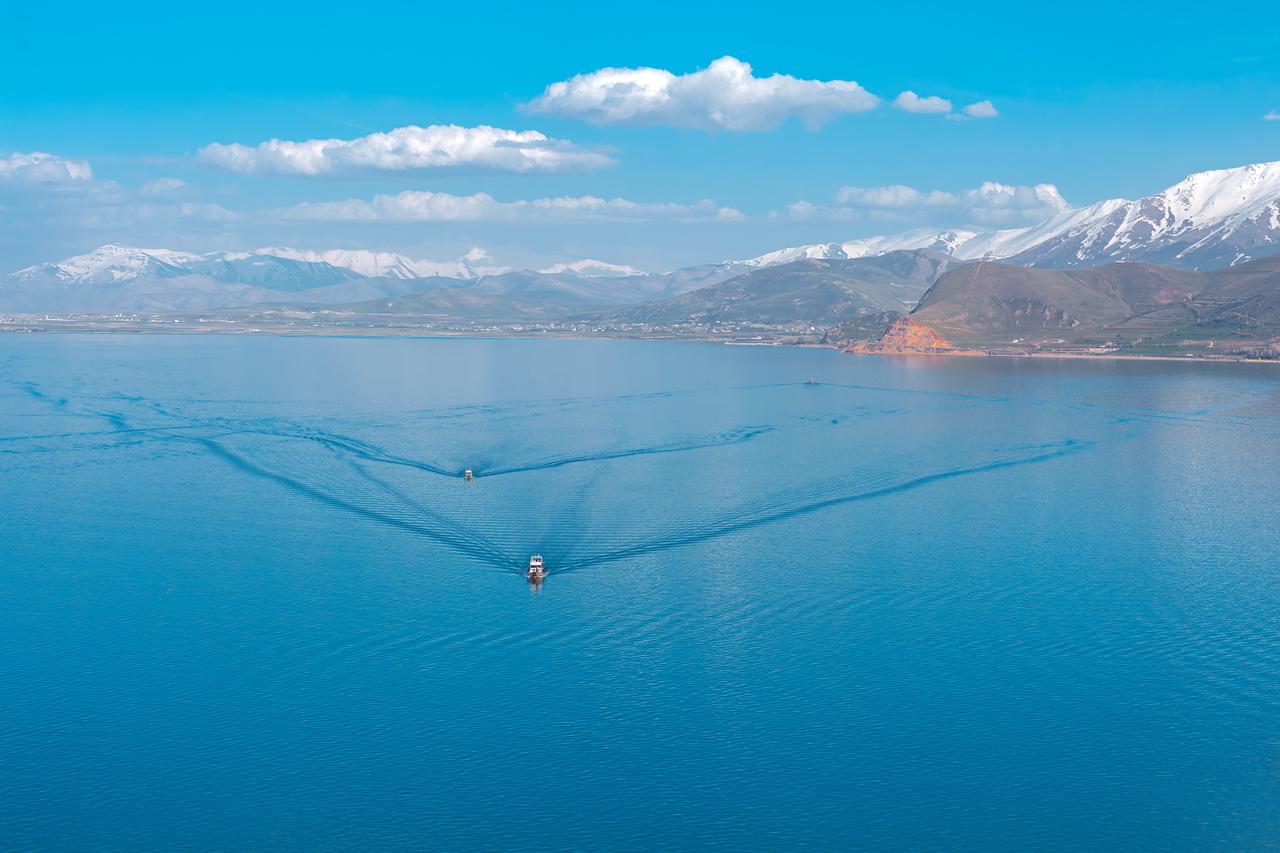
The shores of Lake Van offer a mix of rocky coves and shallow beaches, ideal for swimming during the warmer months.
The lake’s high salinity makes the water feel soft and buoyant, and temperatures remain warmer than other freshwater lakes in Türkiye. You can swim at Gevas, Edremit, or along the bays near Akdamar Island, where the scenery includes a combination of forested slopes and volcanic rock formations.
In addition to swimming, local providers offer seasonal water sports like sailing and kayaking. For travelers interested in less conventional attractions, there is also the long-standing rumor of the "Van Monster", a creature local residents first reported seeing in the late 19th century. While no scientific proof exists, the legend adds a playful layer to Lake Van’s local lore.
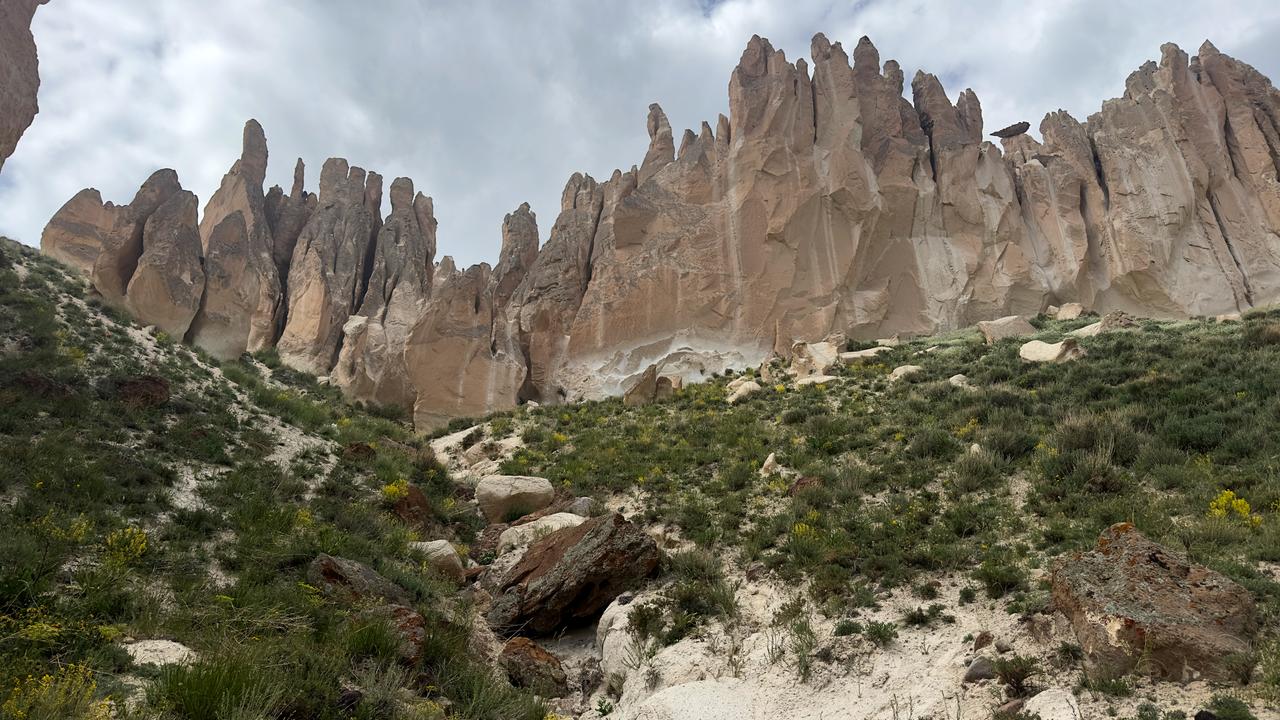
Not all fairy chimneys are in Cappadocia. The region known as Vanadokya, near the village of Yavuzlar in Baskale, contains over 17,000 natural rock pillars formed by wind and rain eroding the volcanic remnants of Mount Yigit.
Locals named the area after Cappadocia due to the resemblance, and visitors can walk through corridors, caves, and lookout points that feel untouched and remote.
This site still receives relatively few visitors compared to its central Türkiye counterpart, making it ideal for travelers who prefer quieter destinations. You can reach Vanadokya by car or local transport from Van city, but be prepared for limited services and signage.
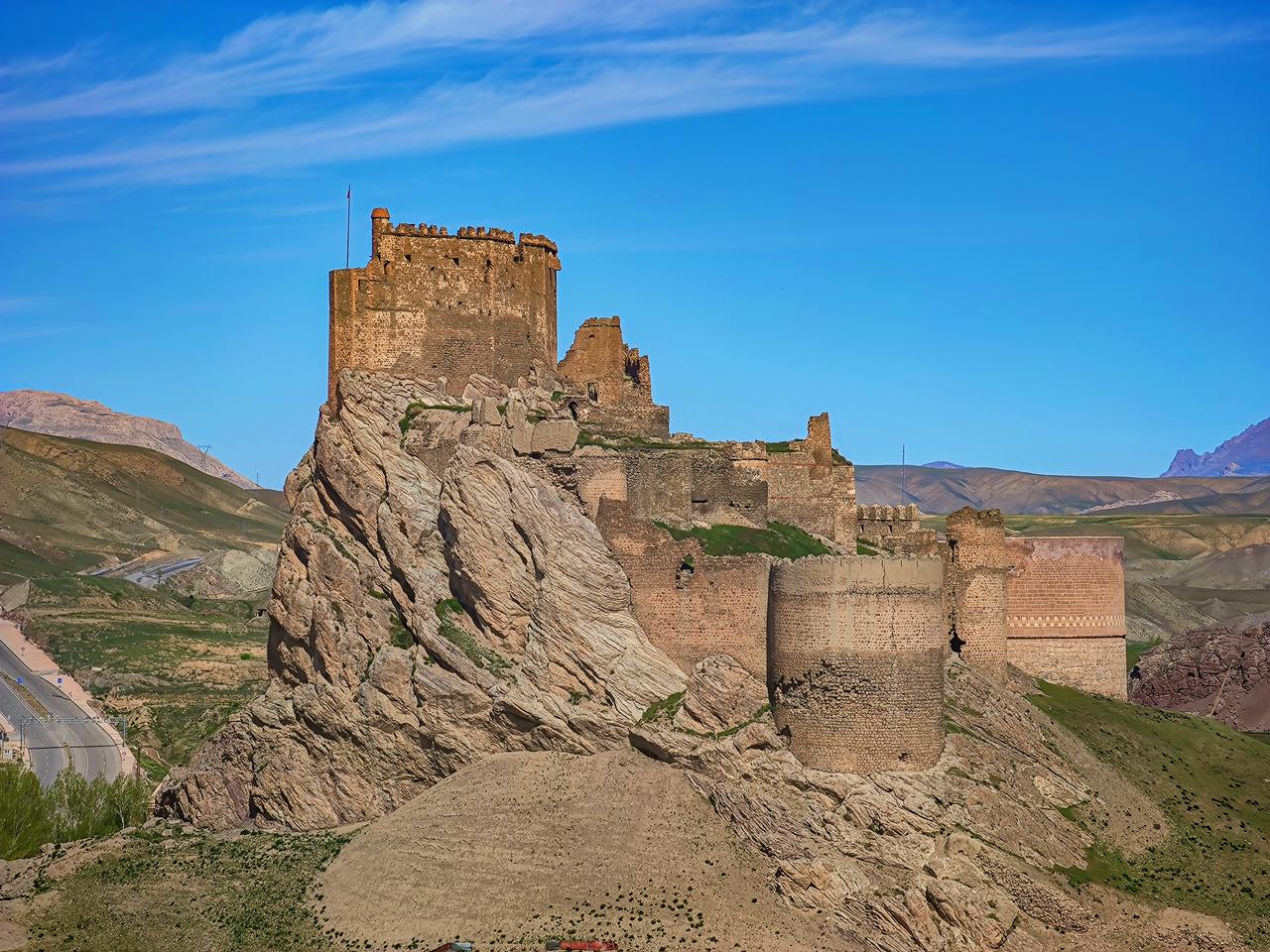
Hosap Castle, located near the Hosap River, offers a commanding view of the valley and remains one of the region’s most intact medieval fortresses.
Though originally founded by the Urartians, most of the current structure dates to the 17th century, when the Ottoman Empire controlled the area. Its strategic location drew attention from several empires, including the Persians, Macedonians, Byzantines, and Seljuks.
Cavustepe Castle, built by King Sarduri II between 643 and 645 B.C.E., rises over the western end of Mount Bol. Archaeologists have uncovered temples, living quarters, fortified walls, and a rectangular structure called "Uckale," unique among Urartian sites.
These ruins allow visitors to understand how the Urartians organized their society and worshipped their gods Haldi and Irmusini.

Located just 30 kilometers (18.6 miles) from Lake Van, Ercek Lake attracts more than 450 species of birds.
Ornithologists and amateur birdwatchers visit the lake each spring and summer to see flamingos, grebes, herons, and the occasional white-headed duck. The area also hosts the annual Flamingo Festival, celebrating the ecological richness of Eastern Anatolia.
Nearby, Muradiye Waterfall flows powerfully during spring and early summer. The waterfall drops 20 meters into a shallow pool and is surrounded by greenery, picnic spots, and a suspension bridge for visitors.
Locals named the waterfall after Ottoman Sultan Murad IV, who reportedly stopped here during a military campaign and ordered the site preserved.
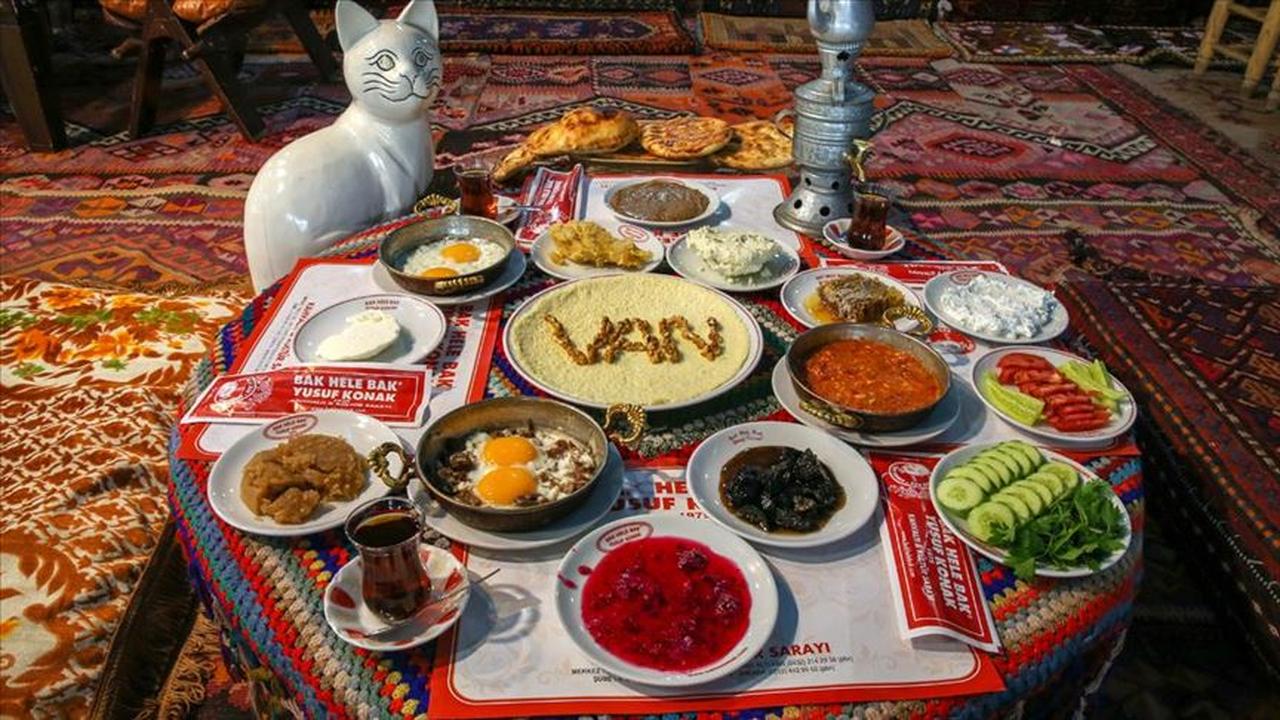
Van’s signature breakfast includes over 20 small dishes made with locally grown and produced ingredients.
These include herbed cheese (otlu peynir), murtuga (a scrambled egg and flour dish), kavut, and honey with clotted cream. Meals often include unlimited tea served from a samovar. The prices often vary.
After breakfast, travelers often visit the Van Cat House, located on the Yuzuncu Yil University campus. The facility preserves and studies the Van cat, a white breed known for its two differently colored eyes and rare fondness for water.
You can enter the center for a small fee, play with the cats, and learn about the local conservation program.
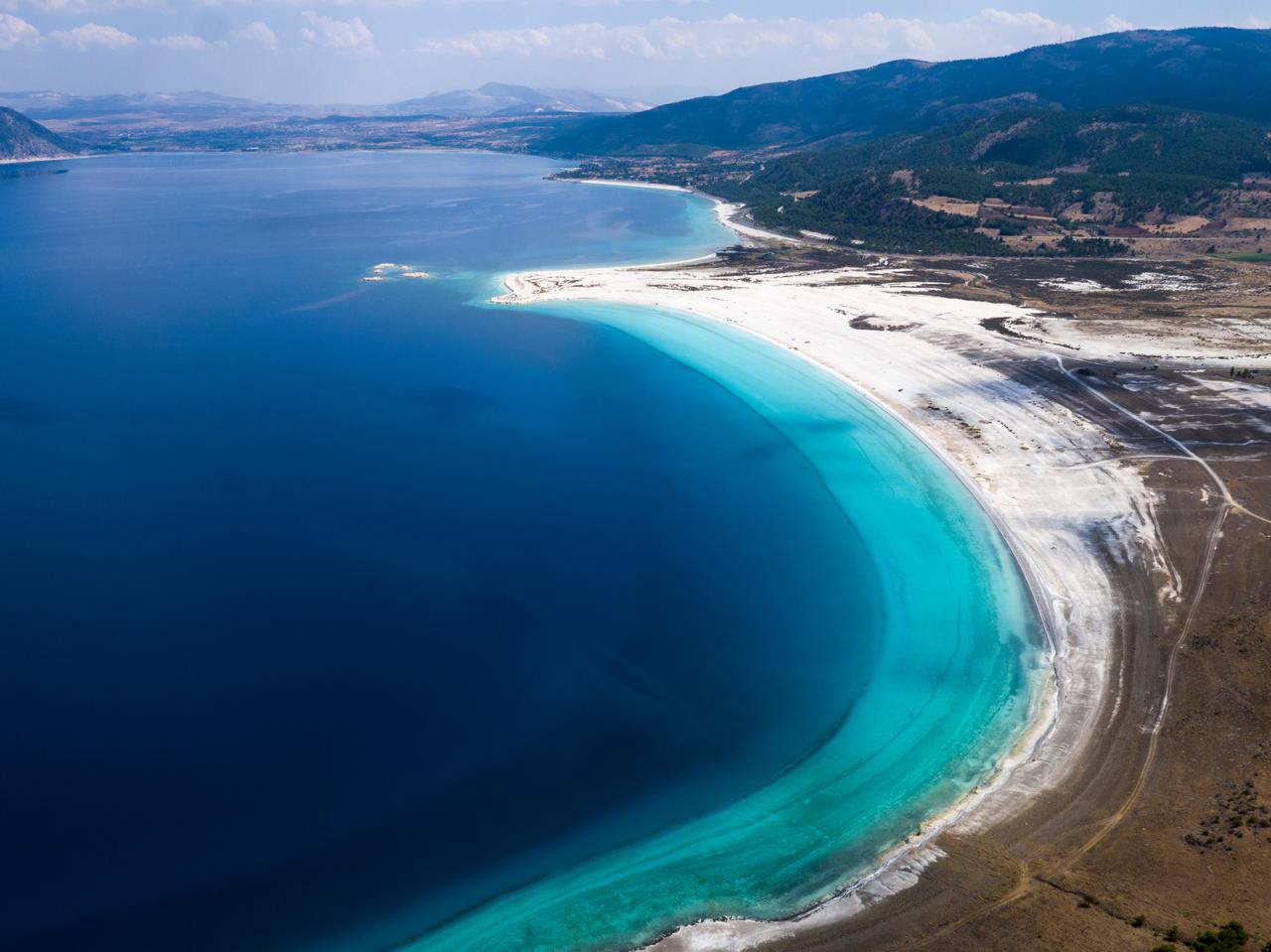
If you have more time to explore beyond Eastern Anatolia, Türkiye offers dozens of lakes worth visiting. Each offers something distinct, from birdwatching to mineral-rich waters.
Lake Salda (Burdur): Known for its white sands and clear turquoise water, Lake Salda is the cleanest lake in Türkiye. It formed inside a volcanic crater and remains largely undeveloped, giving it a quiet, pristine feel. Locals often call it the "Maldives of Türkiye" due to its striking resemblance to tropical lagoons.
Lake Beysehir (Konya): This freshwater lake sits between the cities of Antalya and Konya and serves as an important ecological zone. The lake’s 32 islands and adjacent national parks support more than 150 bird species. Visitors enjoy mountain biking, hiking, and boat tours, especially between May and October.
Lake Tuz (Central Anatolia): Türkiye’s second-largest lake covers 1,600 square kilometers (618 square miles) and is one of the most saline lakes in the world. Each summer, flocks of flamingos feed in its shallow waters. The lake’s white, flat surface often attracts photographers and those interested in geology or birdlife.
Lake Uzungol (Trabzon): Nestled in the Black Sea highlands, Uzungol offers a tranquil alternative to Türkiye’s salt lakes. Its surrounding pastures, wooden houses, and mist-covered hills create a calm environment. Travelers walk the circuit around the lake or relax at lakeside cafes serving traditional Black Sea cuisine.
Van gives travelers a reason to venture beyond Türkiye’s usual tourist trail. Between the ancient Urartian fortresses, scenic volcanic islands, and rare ecological sites, the Lake Van region offers far more than a day trip.